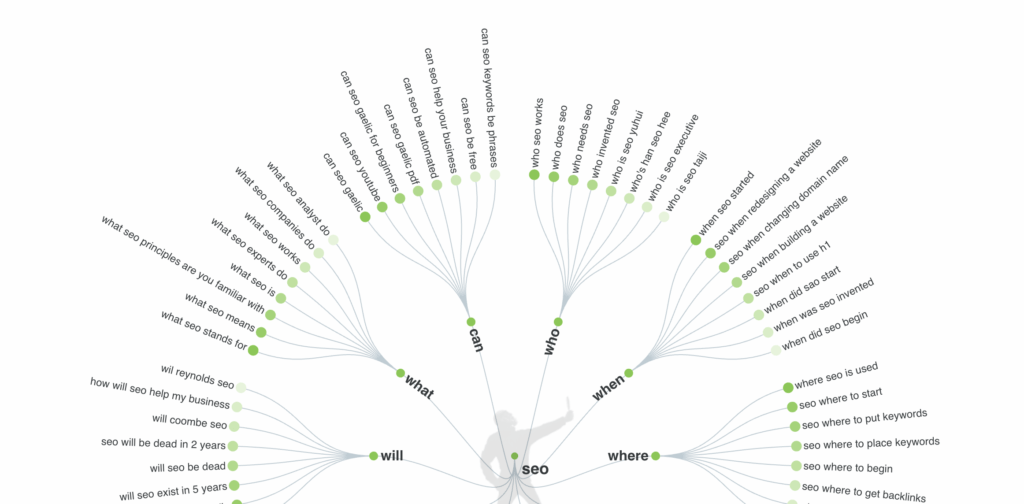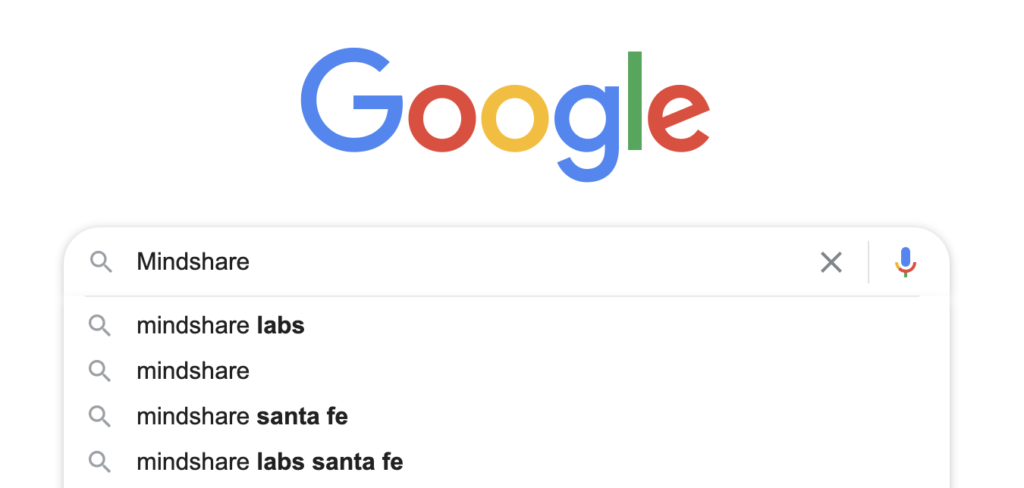SEO – Pillar Two, Content SEO
We view SEO in three distinct pillars; Technical SEO, Content SEO, and Brand Strategy. Each pillar is just as important as the last. It’s important for all websites to consider each and ensure each of the 3 SEO pillars is strong.
Today we’re talking about Content. Content is the meat of your website. Without content your site wouldn’t exists. Focusing on content will ensure that your visitors find what their looking for and start to build trust in your brand which will come in handy for next week’s Pillar, Brand Strategy.
Keyword Research
This section will help us identify what words to use when writing content on a website. If your site DOES NOT have a blog this is something to consider when creating the evergreen content. If your site DOES have a blog, this is something to consider every time a blog is written.
Find Questions

Figuring out what to write about is a pain. Researching the internet’s FAQ’s on a particular keyword is a great place to start. These questions can help prompt longer blog posts that will fair better in search.
Once again, the internet has provided us with an awesome tool for finding these questions: https://answerthepublic.com/. Simply provide a topic, brand, or product and a series of questions will be presented in a beautiful infographic.
Gather Keywords

One of the best ways to do keyword research is with Google’s ‘search suggest’ functionality. Go to google.com and type a keyword into google, but don’t press enter. Instead, take a gander at what Google suggests. These phrases are called long tail keywords and make up a considerable percentage of google searches. Plus, these are created from actual google searches, so we know they are being used.
These ‘long tail keywords’ have a second advantage, they are not as competitive as their shorter counterparts. Basically, there are not as many sites on the internet vying for rank for longer phrases as there are for single word searches. So, you’re liklier to rank higher if you target these suggestions.
Use Google’s Keyword Planner
Keyword Planner is Google’s tool for keyword research. This tool helps to identify related words to a search term. Basically, we can use this tool to help craft content that is going to be more easily searched and found.
Note: You must have a Google Ads account to access this page.
Gather Synonyms and LSI Keywords
Years ago a practice called ‘keyword stuffing’ took over the internet and web pages. This practice made indexing and analysing website content incredibly hard. Website owners were trying to ‘break’ the search indexer into ranking their site on all subjects. Well, Google got smart. Keyword stuffing is now considered a detriment to SEO and should never be done. However, we can use Synonyms and LSI keywords.
LSI (Latent Semantic Indexing) Keywords are terms that are closely tied to your target keyword but not direct synonyms.
If the word “sierra” was one of our keywords, it makes sense to include some LSI keywords with it. Why? Because this word could relate to the vehicle, the mountain range, the baby name, the brand, etc. To help google understand what our page is about, we should include LSI keywords and synonyms. So, if we’re writing about the mountain range, we should use the word ‘mountain’ and the word ‘range’. Obviouse, but not so obvious.
Amazing Tool: https://lsigraph.com/
Write Your Content With Your Keyword List In Mind
Now that we’ve gathered our keyword list and topic, it’s important to write using those phrases and terms. Now, not all of them need to be used and its important that your post doesn’t end up being a SEO madlib. Google does measure the ‘usefulness’ of web pages through an incredibly advanced algorithm. So, make sure your post or page is useful to humans. Besides, we’re building communities here, not appeasing robots.
Nuts-and-Bolts SEO
We need to ensure our site is 100% technically correct and optimized for SEO. Each of these has been thoroughly tested by the web development community and all have a track record of improving SEO performance.
Include Keywords in Your URL
Google and Bing both use the page’s URL to understand what the page is about. Make sure it has words in it that relate to the article. Better yet, use your keyword(s). Plus, this makes things easier for users… remember, we’re writing for humans.
Use a Short URL
Short URLs simply rank better.
Include your keyword in Your only H1 tag.
Your page or post should have only one h1 (<h1>) tag. This is your page or post title and it should appear as close to the beginning of the web page as possible. Your best bet is to make your keyword the first word of that title.
Use Title Tag Modifiers
Your title uses one or more of your keywords but people are unlikely to be searching just for those keywords. Instead internet users often use phrases like “best shoes 2020” or “website SEO guide” or “Nicolas Cage movie review”. So, we can add some of these title modifiers to our page title. My favorites are:
- Checklist
- Review
- Guide
- Best
- The Current Year (2020, 2021, etc)
- Awesome
- Top 10, Top 5, etc.
Use Your Keywords in the First Paragraph
Google puts more weight on the first paragraph of content, so make sure your keywords appear there. A good way to do this is to make your first paragraph a summary of what your going to explain deeper in the rest of the page.
Use Keywords in Heading Tags
Heading tags are deemed more important that regular paragraph tags. So, use keywords in them.
Use Alt Tags in Images
Images and other rich media make your content interesting for humans. Unfortunately, Google and other search engines have a hard time understanding images. So, to help, we can use title and alt tags as well as the image filename to describe the images content.
Instead of:
<img src="/img/1a95ad.jpg"/>Do this:
<img src="/img/fluffy-cat.jpg" alt="Fluffy Cat Sleeping" title="Fluffy Cat Sleeping" />Link to Other Sites
You should include 5-10 links to other sites help Google to know that your article is trustworthy and researched. The larger or more authoritative the website, the better.
Link to Your Content
Obviously, if we’re spending time getting people to our page, we should link to other articles of ours. I mean, we might as well. For example, this blog is about SEO, I’ve written about SEO before.
Make sure External Links Open in New Tabs
If we link externally to other pages, we’re essentially sending our visitors away. To help keep them on our site, we can open these other sites in new tabs. Plus, this helps Humans stay organized when doing research, it’s just a nice thing to do.
